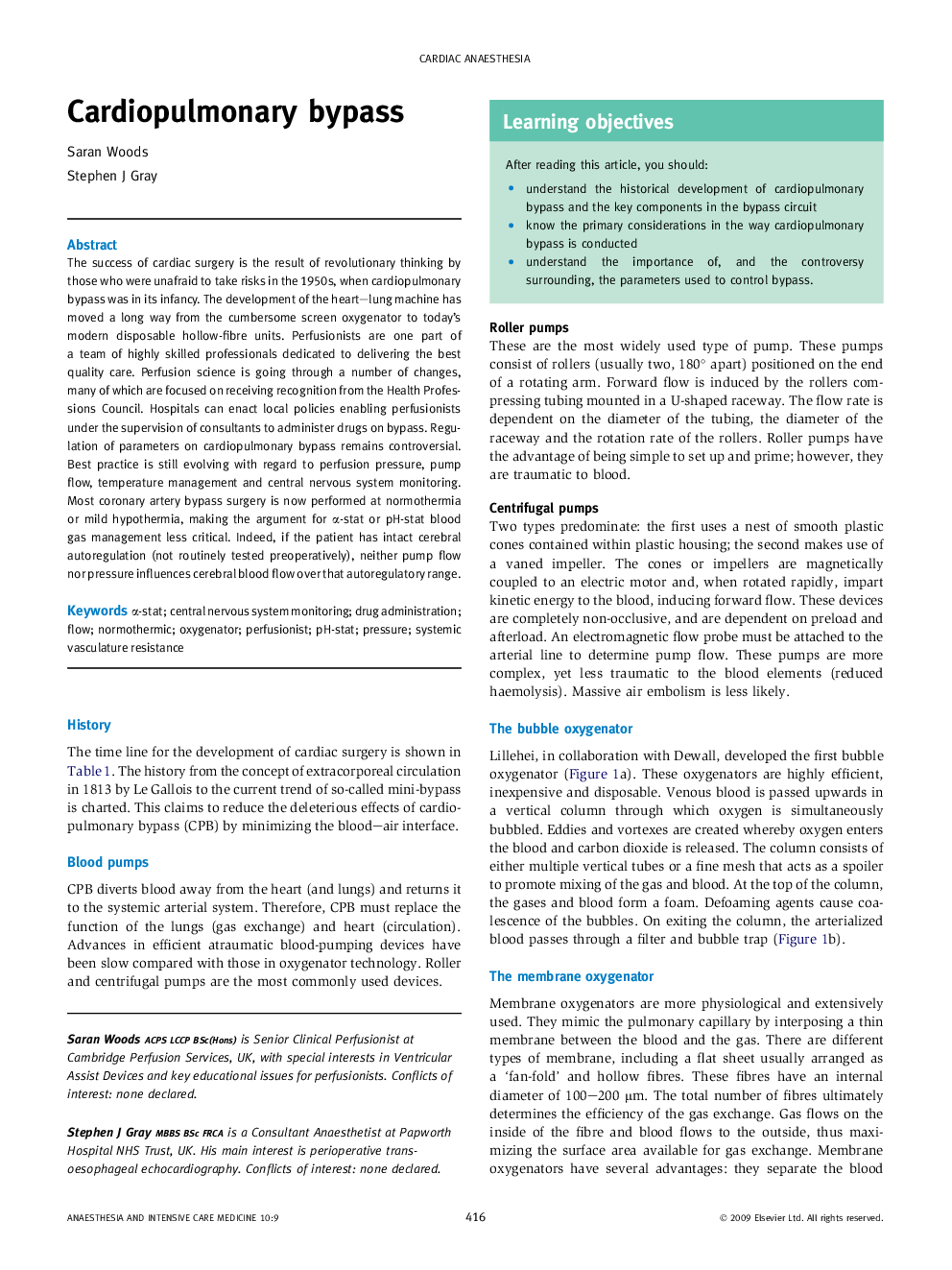| Article ID | Journal | Published Year | Pages | File Type |
|---|---|---|---|---|
| 2743476 | Anaesthesia & Intensive Care Medicine | 2009 | 5 Pages |
The success of cardiac surgery is the result of revolutionary thinking by those who were unafraid to take risks in the 1950s, when cardiopulmonary bypass was in its infancy. The development of the heart–lung machine has moved a long way from the cumbersome screen oxygenator to today's modern disposable hollow-fibre units. Perfusionists are one part of a team of highly skilled professionals dedicated to delivering the best quality care. Perfusion science is going through a number of changes, many of which are focused on receiving recognition from the Health Professions Council. Hospitals can enact local policies enabling perfusionists under the supervision of consultants to administer drugs on bypass. Regulation of parameters on cardiopulmonary bypass remains controversial. Best practice is still evolving with regard to perfusion pressure, pump flow, temperature management and central nervous system monitoring. Most coronary artery bypass surgery is now performed at normothermia or mild hypothermia, making the argument for α-stat or pH-stat blood gas management less critical. Indeed, if the patient has intact cerebral autoregulation (not routinely tested preoperatively), neither pump flow nor pressure influences cerebral blood flow over that autoregulatory range.
